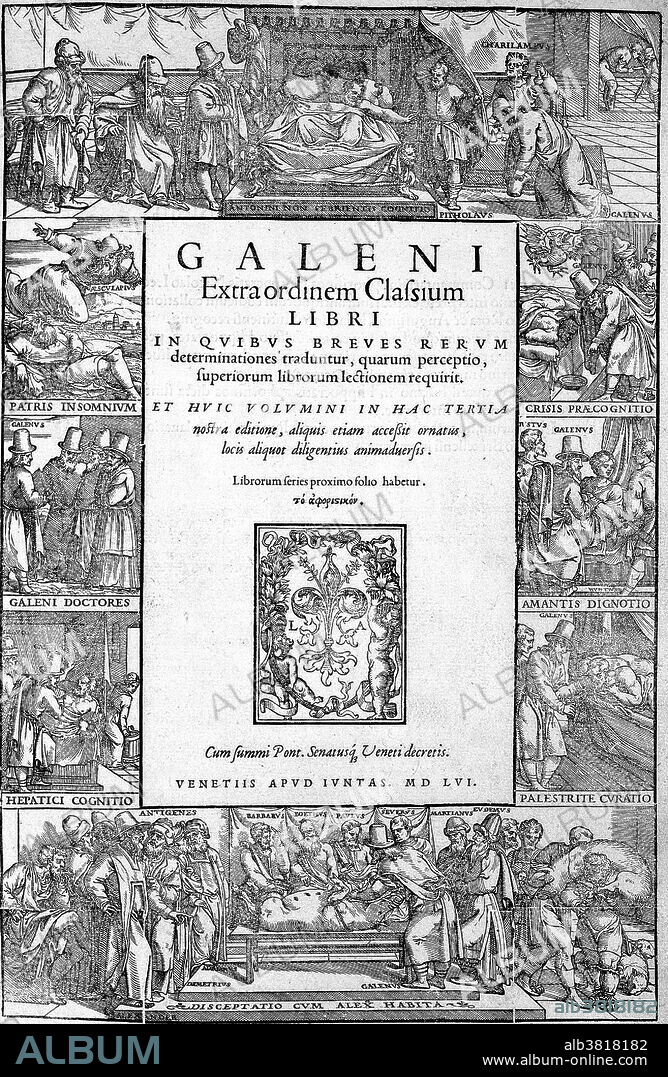alb3818182
Galen, Opera Omnia, Title Page, 1556

|
Añadir a otro lightbox |
|
Añadir a otro lightbox |



¿Ya tienes cuenta? Iniciar sesión
¿No tienes cuenta? Regístrate
Compra esta imagen

Título:
Galen, Opera Omnia, Title Page, 1556
Descripción:
Ver traducción automática
Title page of Galen's Opera omnia, with woodcut illustrations showing medical scenes that include the sick bed of Emperor Marcus Aurelius and the dissection of a pig, 1556. Galen (131-201) was born in Pergamos in Asia Minor. After receiving medical training in Smyrna and Alexandria, he gained fame as a surgeon to the gladiators of Pergamos. He was eventually summoned to Rome to be the physician of the Emperor Marcus Aurelius. Galen spent the rest of his life at the Court writing an enormous corpus of medical works. Taking Hippocrates' notions of the humors and pathology, Galen incorporated the anatomical knowledge of noted Alexandrians. A supporter of observation and reasoning, he was one of the first experimental physiologists, researching the function of the kidneys and the spinal cord in controlled experiments. Galen's works in many ways came to symbolize Greek medicine to the medical scholars of Europe and the Middle East for the next fifteen centuries. The most accomplished of all medical researchers of antiquity, Galen contributed greatly to the understanding of numerous scientific disciplines including anatomy, physiology, pathology, pharmacology, and neurology, as well as philosophy, and logic.
Crédito:
Album / Science Source / Wellcome Images
Autorizaciones:
Modelo: No - Propiedad: No
¿Preguntas relacionadas con los derechos?
¿Preguntas relacionadas con los derechos?
Tamaño imagen:
2694 x 4128 px | 31.8 MB
Tamaño impresión:
22.8 x 35.0 cm | 9.0 x 13.8 in (300 dpi)
Palabras clave:
ANATOMIA • ARTE • CIENCIA • DIBUJO • EMPERADOR MARCO AURELIO • ESCRITURA • FILOSOFIA • FILOSOFO • FISIOLOGIA • GRABADO • GRIEGO • HISTORIA • HISTORICO • ILUSTRACION • LIBRO • MARCO AURELIO • MARCO AURELIO, EMPERADOR • MARCUS AURELIUS ANTONINUS • MARCUS AURELIUS • MEDICINA • MEDICINAL • OBRA DE ARTE • PAGINA DEL TITULO • PATOLOGIA • S. -II • S. XVI • SIGLO XVI • SIGLO-III
 Pinterest
Pinterest Twitter
Twitter Facebook
Facebook Copiar enlace
Copiar enlace Email
Email
